
 Illustration by Diana Ramirez
Illustration by Diana Ramirez
 by Yunyi Dai
by Yunyi Dai



 Illustration by Diana Ramirez
Illustration by Diana Ramirez
 by Yunyi Dai
by Yunyi Dai

Ican still remember her application. She said, “I would drive by USC every day on my way to a different college and think of USC as ‘unattainable.’” Sandy Chavez, a 2018 NextGen alumna, just finished hosting season one of our first-ever podcast, Future Rewind.
We returned to USC this week for the eighth time. We were all at dinner the first evening, and in looking around the tables, I remembered Sandy’s use of the word “unattainable.” We have a range of different people in this group. We usually do. But this week helped me see that we are achieving our mission of supporting people from underrepresented communities, and those who do not fit predetermined and outdated criteria for acceptance.
The motto at USC is “Fight On.” Yes. Absolutely.
The Next Generation Radio Project is a week-long digital journalism training project designed to give competitively selected participants, who are interested in radio and journalism, the skills and opportunity to report and produce their own multimedia story. Those chosen for the project are paired with a professional journalist who serves as their mentor. This #NPRNextGenRadio

project was funded by the USC Annenberg School for Communication and Journalism in Los Angeles.
Cover artwork: Diana Ramirez
Zine design: Amara Aguilar, Caitlin Hernández, Arantza Peña Popo and Diana Ramirez



Sophie Barlow is an Oregon-based illustrator and designer with a passion for creating imaginative visual solutions for complex stories. Sophie discovered her love for editorial work while studying at the University of Oregon, where she worked as art director for Ethos Magazine and as an illustrator for various other student publications. As an Oregonian, born and raised, Sophie feels the most inspired when she can be alongside nature.
Illustration by Eejoon Choi
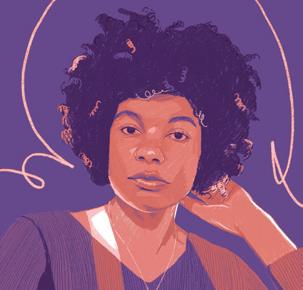
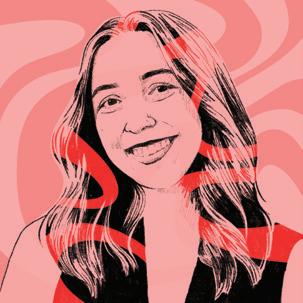
Sophie Barlow
Illustration by
Alyssah Hall is a freelance reporter for the Los Angeles Sentinel and AfroLA. She is passionate about highlighting minority stories, arts, culture and mental health. She aspires to one day have her own media company to platform people of color, specializing in solution-driven journalism and uplifting narratives. Alyssah is a Cal State Los Angeles 2023 graduate and was formerly a multimedia reporter for Cal State LA’s University Times. In her free time, she enjoys practicing yoga and meditation.
Laura Dux is a student journalist studying radio production at Pasadena City College. Her theater background has inspired her to share stories that are accessible, intimate and impactful. She is currently the assistant social media editor at The Courier at PCC and a live events intern at LAist. Originally from Hawaii, she is constantly searching for a good bowl of poke in Los Angeles.


Brandon Killman is a community journalist with a focus on storytelling for a digitally native audience. He’s worked on social media teams for broadcast news stations CNN and ABC-7. More recently, he creates social media content for a start-up news platform called Zivvy News, which aims to engage a Gen Z audience, and is a part-time social media producer for LAist. In his off time, he’s getting lost in antique stores or playing retro video games.
Lolita Mojica is a journalism student at Long Beach City College. Her goal is to amplify the voices of her community through writing, photography and audio. She is currently editor-in-chief of the Viking News at Long Beach City College and a content writer/editor at LB Living. She is a member of the National Association for Hispanic Journalists. In her free time, she enjoys taking long hikes with Daphne, her 2-year-old German Shepherd/Husky, and nerding out on vinyl and good books.
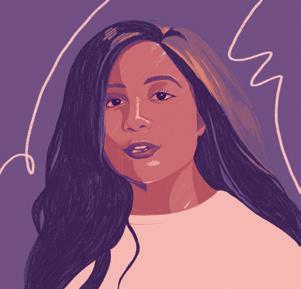

Jill Shih is a caregiver and journalist in Southern California, with a passion for telling stories about marginalized communities. She aspires to become an investigative reporter dedicated to covering the neurodivergent population. Previously, she worked as a general assignment reporter for a bi-weekly newspaper in Henderson, Nev., C-SPAN Networks, and as a news producer for the ABC affiliate in Las Vegas. Jill has a great love for her family and Hilo, Hawaii, where she was born.
Jill Shih (she/her) Lolita Mojica (she/her) Laura Dux (she/her) Illustration by Sophie Barlow Brandon Killman (he/him) Illustration by Shideh Ghandeharizadeh Sophie Barlow (she/her) Alyssah Hall (she/her) Illustration by Eejoon Choi Illustration by Emily Whang
This story contains a mention of a suicide and may be upsetting to some readers.
BY BRANDON KILLMANFabian Debora opens the doors to the Homeboy Art Academy every day at 8 a.m, inviting gang-involved young adults ages 18 to 25 into the Boyle Heights studio space. The room fills with bombastic chatter, hip-hop music playing on phones and the shuffling of sneakers sliding against the
white-tile floors.
Debora, a long-time resident of Boyle Heights, prolific artist and former gang member is now the Executive Director of Homeboy Art Academy. “I made it a responsibility and a way of making amends to my community, for I terrified it at one point in my life,” Debora said.
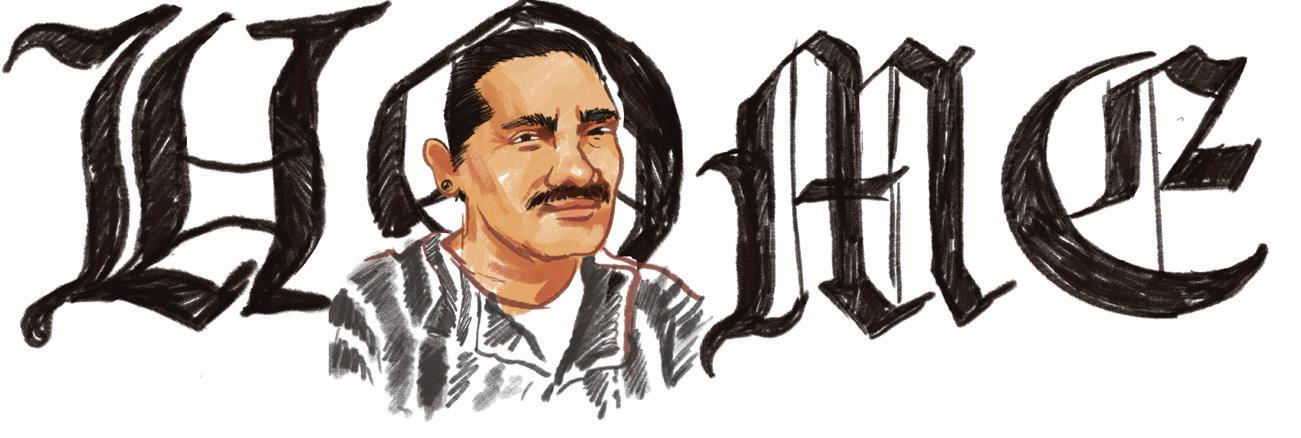
He founded the organization in 2008 with a mission to provide a space for gang-involved youth to heal and transform their lives through art.
His earliest memories of Los Angeles started in the Pico-Aliso housing projects, which was just east of the Los Angeles River. The community used to be home to an influx of Mexican-American immigrants who were predominantly Spanish speaking, cultivating a community of families that would bring with them the culture of Mexico.
“The aromas and the early morning canelas smell, with cafe and menudo…all that good stuff our grandmothers and mothers were cooking at the time,” Debora described.
While the housing projects were a through line to his fondest memories of his culture, Debora also recalls the toxic gang culture that plagued the streets of his neighborhood, and the rise of the crack cocaine epidemic. A lifestyle that he would become familiar with in the late 80s and early 90s.
“I didn’t grow up saying ‘I’m
gonna be a gang member when I grew up,’ but because of the environments we come from, between the beauty, there’s grime,” Debora said.
For Debora, this culture was a natural part of his environment, and as a kid, he would seek refuge in the L.A. River to create art; a place safe from gang violence, free from drugs and an escape from an abusive home life. “I was always fond of those bridges, because it’s almost a sense of transcendence from the east side to the west side. Right, like evolution, growth, hope,” Debora said.

Seeped in a drug addiction, it took him a near death experience to find purpose in his artwork, his life as a father and as a mentor.
“I used to think that the way that I can protect my children was to kill myself,” in an attempt to end his life
Illustrations by Arantza Peña Popohe ran across the I-5 freeway, “when I ran across the freeway, God said otherwise,” Debora added.
This nearly fatal experience launched Debora on a path to sobriety and laying the groundwork to becoming a state certified drug counselor to help others involved in drug addiction and gang activity. Debora also pushed forward to

“Painting
change his life at home.
“I start to make sure that there is no more abuse, neglect, and abandonment in my household, but that there’s nothing but love, compassion and understanding everything a child needs to sustain his innocence,” Debora said.
Debora has seen Boyle Heights in different phases in his life, and through his self-healing journey he has also been able to nurture the community around him. Down the street from the art academy on 6th Street and Bonnie Beach Place, Yolys Market is the canvas of one of Debora’s murals.
He first completed it in 2007 when he was still struggling with a drug addiction, but revisited the building in 2018 when he got sober to revise the mural. The new mural is a 20 feet wide and 10 feet tall close up of the Virgin Mary and the painting extends to the front door, the store sign and its trimmings. That corner had a history of violence, according to Debora.
“I thought that Virgin Mary would neutralize and bring a sense of peace and it also has given the mothers and our leaders from their community a place to come to congregate,” Debora said. Every year on December 12th the mural is adorned with flowers and celebrated with a live banda on Día de la Virgen de Guadalupe.
For Debora, his home, his art studio and the streets of Boyle Heights are all spaces he calls home in his contemporary life. Through his advocacy it has become his mission to reverse the gang culture, abuse and addiction that used to plague his life from his childhood.
“If it wasn’t for those experiences, that one goes through, and has gone through, then there’s no appreciation for life,” Debora said.
If you or someone you know may be considering suicide, contact the National Suicide Prevention Lifeline at 1-800-273-8255 (En Español: 1-888-628-9454; Deaf and Hard of Hearing: 1-800-799-4889) or the Crisis Text Line by texting 741741.
BRANDON KILLMAN / NEXTGENRADIO what I feel first, and not trying to paint what others may accept, that was key,” says Fabian Debora.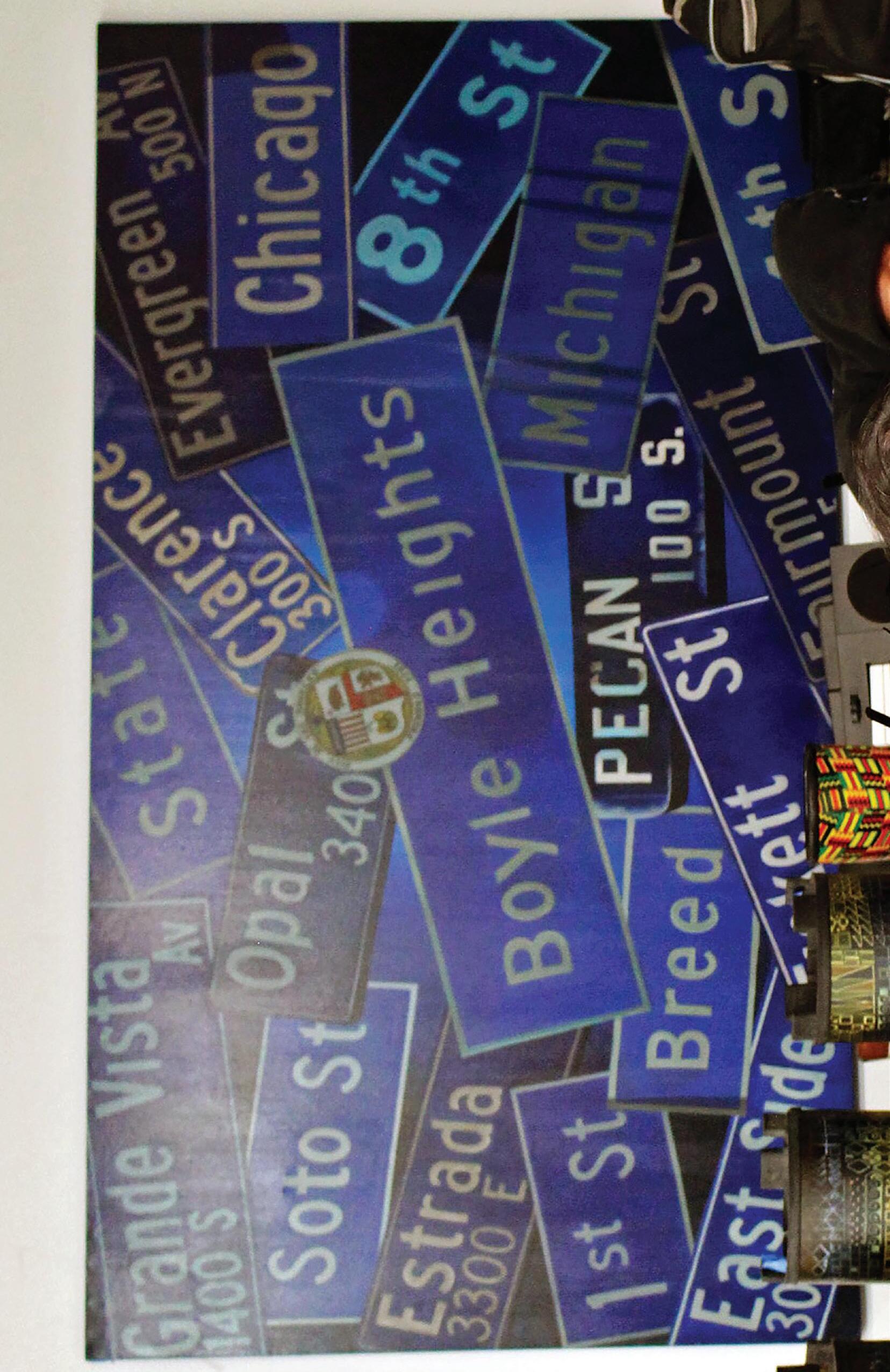
A large mural of street signs, which Debora painted as an ode to his hometown, Boyle Heights.
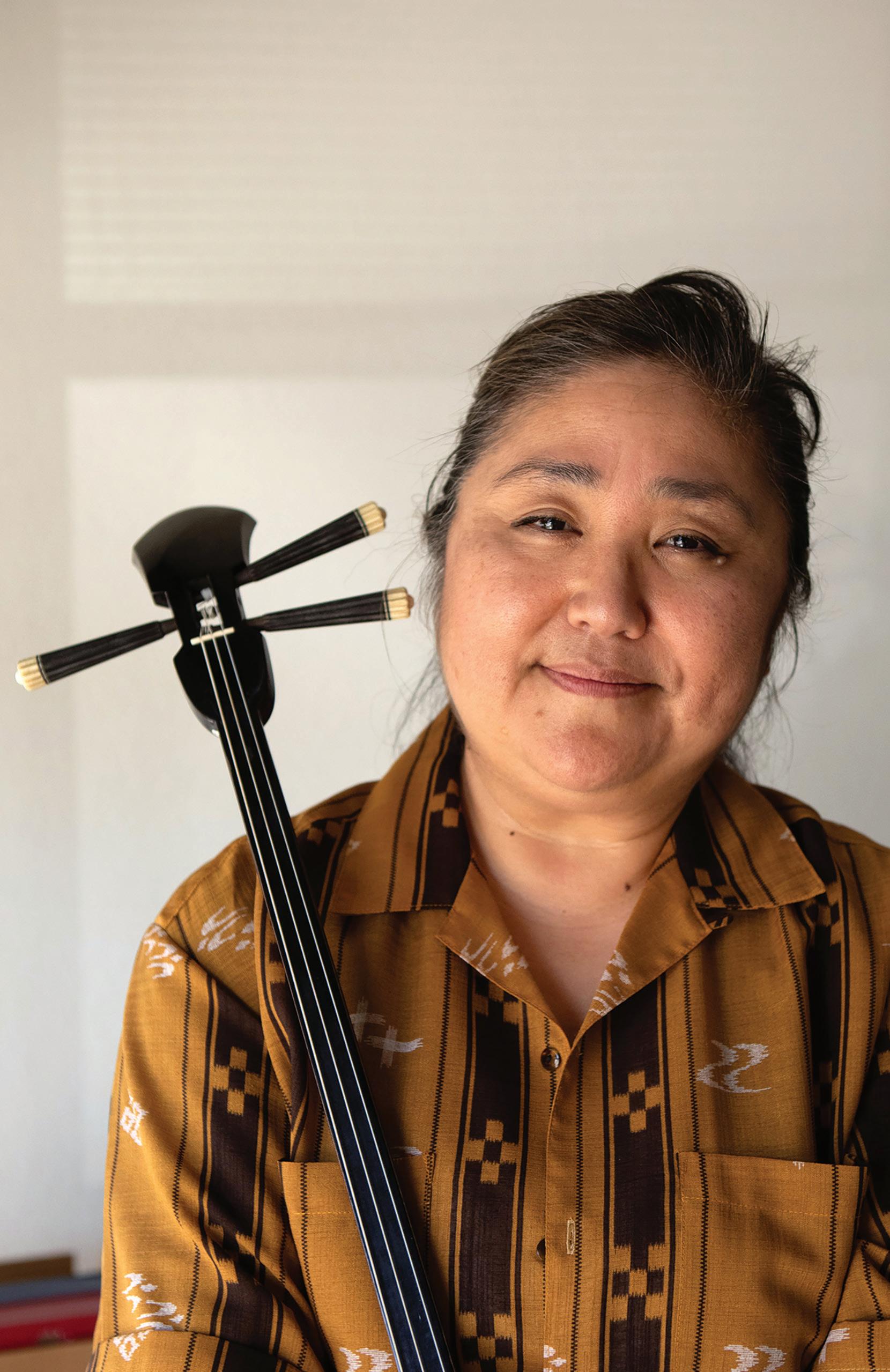
No one would know that the girl who rebelled against Okinawan culture — by quitting dance classes and chopping off her hair — would end up as the executive director of an organization that promotes that very culture and its various art forms.
Yuko Yamauchi is the executive director of the Okinawan Association of America (OAA), a non-profit whose mission is to preserve, promote and perpetuate Okinawan culture.
“I’m the first executive director,” Yamauchi said. “I have an opportunity to kind of shape what OAA does in making a space where I hope that other people would feel that it’s home, as well.”
Yamauchi, born in Okinawa in 1971, immigrated with her parents at seven months old to Gardena, Calif., and the family almost immediately became members of the OAA.
The OAA began about 115 years ago as a kenjikai (mutual aid group) for the Southern California Okinawan community. Like similar organizations across the U.S., the OAA worked to meet the needs of immigrants as they established new lives in their new country: finding jobs and housing and sending funds to their community back in Okinawa.
As a pre-teen, Yamauchi didn’t consider the OAA a “cool” place to hang out.
“I always saw the OAA as … an older person’s thing,” Yamauchi said. “It’s not something I need to get involved with.”
Over the years, she began understanding how unique — and distinct from Japanese identity — Okinawa was.

Okinawans have their own languages and cultures, and at one point they lived autonomously in the Ryukyu Kingdom before Japan annexed and gave the prefecture (or province) the name Okinawa.
Over a hundred years since the annexation of Ryukyu, popular notions of what is universally “Japanese” have subsumed Okinawan culture. When it comes to Okinawa’s political or historical identity, people remember Okinawa as one of the theaters of battle during World War II, where a third of the Okinawan population died.
Yamauchi is among the
Illustrations by Arantza Peña Popo
Okinawans who never knew this history.
One of the moments that opened her eyes, and ears, to Okinawan culture was when she attended a Japanese festival with her friends, and heard what she thought was Japanese music. But when she mentioned it to them, no one knew the music but her. That’s when it hit her: Her Okinawan identity was truly different and she needed to find her way back to dancing.
“It wasn’t until I was in my 20s when I was really thinking about identity,” Yamauchi said.
The OAA helped her apply to an Okinawan governmentsponsored scholarship program for students to live in Okinawa for a year and immerse themselves in any academic or cultural area of interest. She applied when she was 29, the last year she would be allowed in the program, and studied traditional dance.
“That was probably the most
significant time in my life,” Yamauchi said. “I had always dreamed of going to Okinawa.”
Her extended family lives in Okinawa, and through the scholarship program, she was able to meet and really get to know them for the first time. What was supposed to be one year in Okinawa became six years.
“I got to connect with my relatives,” Yamauchi said. “My sisters, they never had that opportunity, so I’m the one that’s always telling the stories of, you know, what grandma said, or, you know, what grandma does. Or, do you know mom looks just like [her]? She has the exact same expression.”
In the six years Yamauchi spent in Okinawa, she immersed herself in art.
“The [dance] training was difficult. I actually hurt my back,” Yamauchi said. “There were these tests that I wanted to take, so I had to manage the pain while
LAURA DUX / NEXTGENRADIO Every year, the OAA holds a picnic for the entire organization filled with dance and song. Here, Yamauchi shows a photo of her 1977 dance premiere at the picnic when she was six years old.continuing to train because I thought, ‘Well, this is the only opportunity I’m going to have to do it.’”
While she continued her dance practice, she also began taking lessons to learn to play the sanshin, an instrument with roots in Chinese culture, and sing while playing it. For Yamauchi, who spent her childhood playing cassettes and dancing to this music, learning how to play it was a dream come true.
“[The singing is] in a language that I’m not a hundred percent familiar with,” Yamauchi said. “But I’m making these sounds. I
feel there’s a calm, a quiet … but for the most part, it’s like an expansiveness.”
When she returned to the U.S. in 2006, she visited the OAA to thank the group for this transformative experience. The first thing they asked her was, “Do you have a job?”
“Well, I’m thinking about going back to school,” Yamauchi said. “But you know, if it’s part time, I’m willing to do it.”
Yamauchi has been working at the OAA ever since.
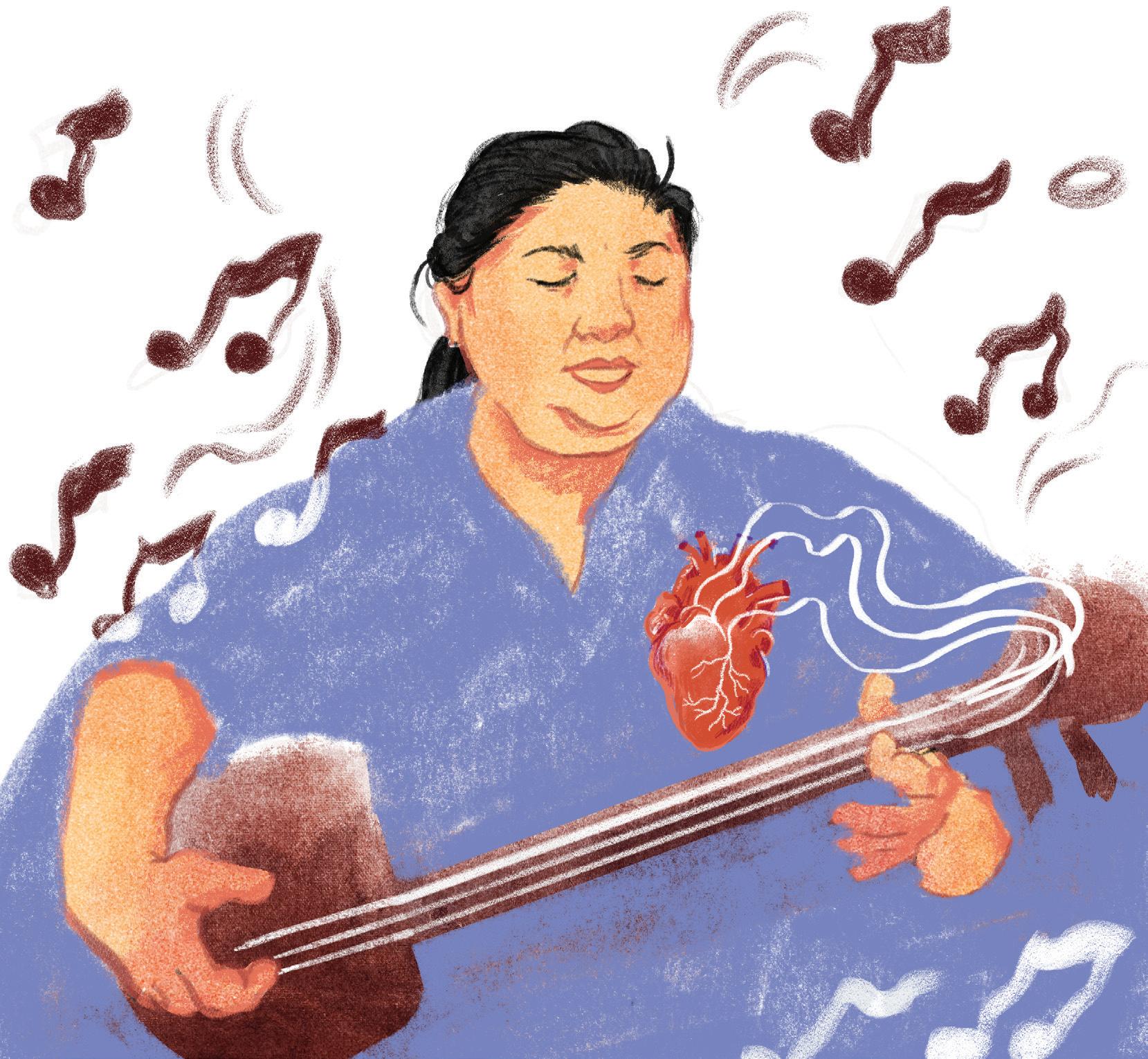
 Illustration by Arantza Peña Popo
Illustration by Arantza Peña Popo
 MONÉ
COURTESY OF
BY ALYSSAH HALL
MONÉ
COURTESY OF
BY ALYSSAH HALL
Moving around was the norm for Carmen Dianne, who selfidentifies as an “army brat.”
Her father was a colonel in the army, and she recalls moving around the United States and other countries.
One of her earliest, and fondest, memories was when her family was stationed at a U.S. military base in Japan.
“My parents would let me and my friends or my brother take the train and just do all of these things outside of the base,” she said.
When her family returned to Maryland for Dianne’s eighthgrade year, it was a challenge to
adjust yet again.
“I’m like, ‘Wait, but I was taking the train in this foreign country, but I can’t go to the mall?’” she said.
The United States Department of Defense reports that there are over 4.7 million military family members and personnel as of 2020. But Dianne often felt “othered” as the only Black family on base during the mid-1990s.

“You don’t see a lot of other Black families. I’ve always been in spaces where there’s not many of us,” Dianne said.
Although she was able to maneuver in predominantly white spaces by code-switching, she still faced microaggressions and did not see much Black representation outside of her family.

and film, and I came to California one time in the summer, fell in love and moved here six months later.”
Enamored as she was about starting a career in Hollywood, Dianne still leaned on her family for support and encouragement when she received a scholarship to attend school in Paris for prosthetics and effects.
“I got off the plane and then all of a sudden everything was foreign,” she said. “I don’t have my parents to hold my hand, this is me on my own.”
Although Dianne had traveled many times as a kid, her first instinct was to call her father.
“My brother, in a lot of ways, is the only other person who understands a lot of what I went through with moving around a lot,” Dianne said.
However, Dianne’s atypical upbringing gave her the confidence and freedom to pursue any calling she desired in life.
After spending her formative years in Maryland and Virginia while attending high school and college, Dianne decided to relocate to California in 2013 to pursue a career as a makeup artist in Los Angeles.
“I started doing makeup in college, [and] fell in love with it,” she said. “I had an interest in TV
“I couldn’t use my cell phone to call him and I was trying to find a pay phone,” Dianne said. “I did finally call him and he said, ‘You made a plan, just stick with it,’ and it all worked out.”

Dianne returned to Los Angeles after her eight-month stint in Paris. She continued to work in the makeup industry until the COVID-19 pandemic.
During that time, the murder of George Floyd, followed by the Black Lives Matter movement,
PHOTO COURTESY OF CARMEN DIANNE This picture was captured in 1995 while the family was stationed at Ft. Leavenworth, Kan. Pictured are Dianne’s older brother, Corey Thomas (middle) mother Sandra Thomas (middle left) and father, Dwayne Thomas (right).deeply impacted and shifted Dianne’s worldview. She felt empowered as she read books by Black activists like Huey P. Newton’s To Die for the People and Assata Shakur’s Assata: An Autobiography.
She felt a calling to help the Black community and economy as many Black businesses shut down during the pandemic. According to a report by the House Committee on Small Businesses, Black business ownership declined more than 40% during the height of the pandemic, more than any other ethnic group.
Dianne’s motivation to help was so strong that she put down her makeup brush and began to strategize solutions to historic
disparities in June 2020 alongside her long-time Maryland friend, Kara Still. The duo looked to address food insecurity, which impacts one out of five Black households in Los Angeles, while also supporting Black-owned businesses.
Their idea to create a farmers market on wheels, featuring Black farmers, food producers & chefs from L.A. County launched in February 2021. They named it Prosperity Market, and the experience brought Dianne closer to her chosen home of L.A.
“Prosperity Market definitely made me feel like a local — like I’m at home. My family expanded, our vendors are our family, the customers have become family,
 ASHA MONÉ / COURTESY OF CARMEN DIANNE Carmen Dianne and Kara Still co-founded Prosperity Market in the midst of the pandemic out of a growing need to support Black-owned businesses and address food deserts. The mobile market features produce and products from Black farmers, food producers and chefs from all over L.A. County.
ASHA MONÉ / COURTESY OF CARMEN DIANNE Carmen Dianne and Kara Still co-founded Prosperity Market in the midst of the pandemic out of a growing need to support Black-owned businesses and address food deserts. The mobile market features produce and products from Black farmers, food producers and chefs from all over L.A. County.
our volunteers are family, so I feel like my family has expanded with Prosperity Market,” Dianne said.
This career change affirmed Dianne’s relationship with the local L.A. community, grounding her deeper into California. Today, she credits her mother’s love, father’s bravery and brother’s understanding in shaping her into
who she is today.
“Growing up as an army brat, a lot of times we choose ‘home.’ We pick our favorite place. ‘That’s where I’m from.’ It’s just for ease of conversation. It’s a lot to get into,” Dianne said. “In a way, L.A. has embraced me and shown me an overall beautiful experience.”
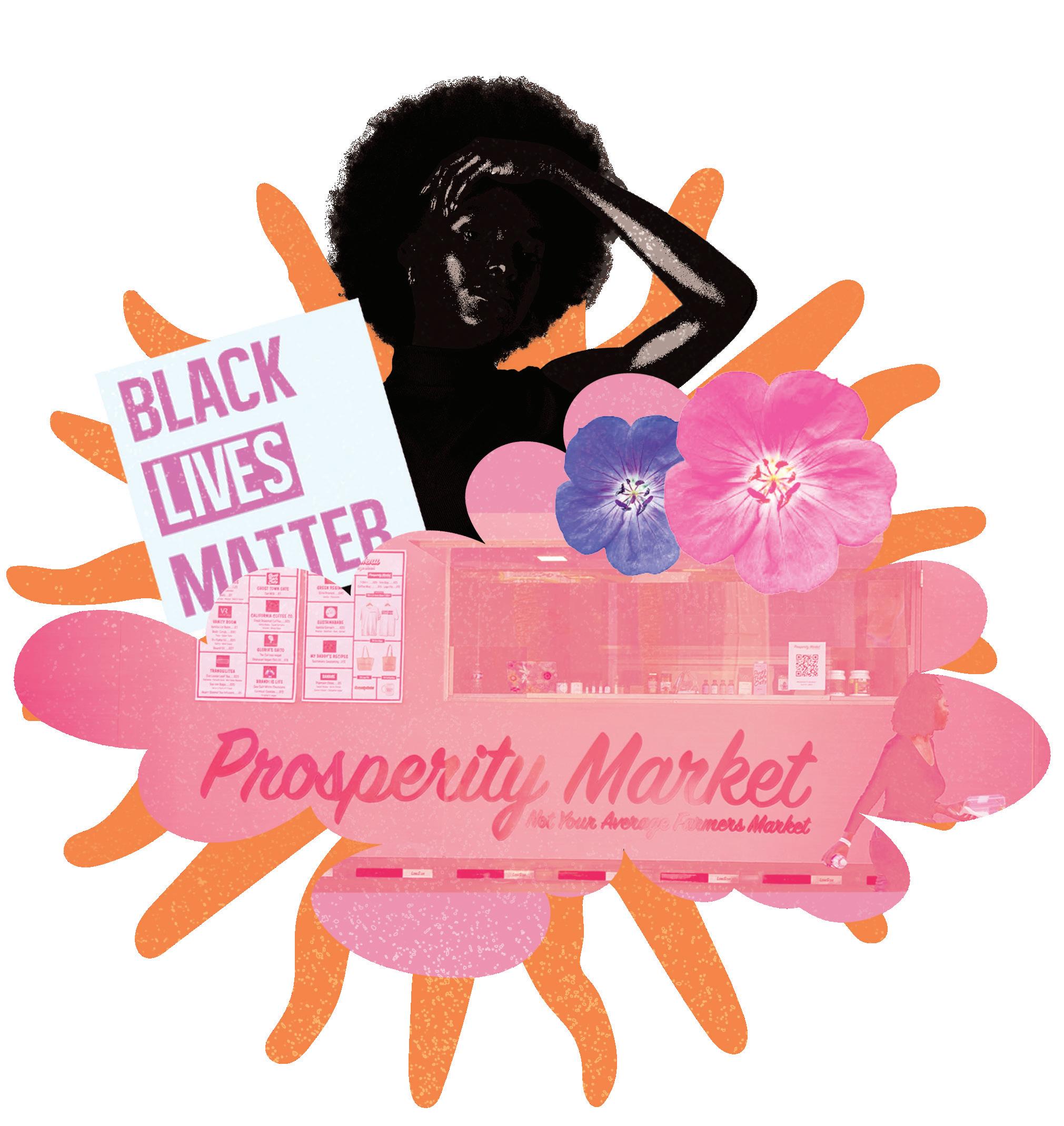
The Next Generation Radio Project is a week-long digital journalism training project designed to give competitively selected participants, who are interested in radio and journalism, the skills and opportunity to report and produce their own multimedia story. Those chosen for the project are paired with a professional journalist who serves as their mentor for that week. This #NPRNextGenRadio project was sponsored by the Annenberg School of Journalism and Communications at the University of Southern California.
Our journalist/mentors for this project were:
Andrea Flores, Freelance Journalist, Los Angeles, CA
Reynaldo Leaños Jr., Producer/Reporter, Latino USA, New York, NY
Julie Patel Liss, Head of Journalism, California State University LA, Los Angeles, CA
David Rodriguez, Partnerships Producer, LAist, Pasadena, CA
Vanessa Vancour, Faculty, School of the New York Times, Reno, NV
Our staff:
• Managing Editors: Michelle Faust Raghavan, Founder, Claridad Media, Portland, OR and Gabriela Saldivia, Editor & Producer, Freelance Journalist, Seville, Spain
• Digital Editors: Natalie Hanson, Reporter, Courthouse News Service, Oakland, CA; Elaine Heinzman, Content Designer, Publicis Sapient, Washington, D.C., Laura Gonzalez, Adjunct Professor, University of Southern California, Los Angeles, CA
• Data Visualization Editor: Elma González Lima Brandão, Digital Editor, KPBS, San Diego, CA
• Zine Team Design & Illustration: Dr. Amara Aguilar, Professor of Professional Practice of Journalism, University of Southern California, Los Angeles, CA; Caitlin Hernández, Reporter, LAist, Los Angeles, CA; Arantza Pena Popo, Freelance Designer, Los Angeles, CA; and Diana Ramirez, Freelance Designer, Los Angeles, CA
• Audio Tech/Engineers: Anne To, Freelance Audio Engineer, Rosemead, CA; and Tina Tobey Mack, Audio Engineer/Sound Designer (Freelance), Somerville, MA.
• Illustrators: Eejoon Choi, Los Angeles, CA; Shideh Ghandeharizadeh, Los Angeles, CA; and Emily Whang, Los Angeles, CA
• Illustration Intern: Sophie Barlow, Salem, OR
• Visual Editors: Corinne Chin, Director of News Talent, The Associated Press, Chicago, IL; and Mary Kay McFarland, Associate Professor, Reed College of Media at West Virginia University, Morgantown, West Virginia
• Copy Editor: Brent L. Smith, Freelance Copy Editor, Los Angeles, CA
The Next Generation Radio program is directed by its founder, Doug Mitchell, Consultant, NPR, Washington DC.

 JILL SHiH / NEXTGENRADIO
JILL SHiH / NEXTGENRADIO
Del Rio’s 7-year-old son has wandered from home five times in the last four years. She hopes community support and safety measures will prevent this from happening again.
Araceli Del Rio, 34, knows every inch of her three-bedroom, multi-generational home located in the northeast part of Monterey Park, Calif. She’s lived there since she was 16, and it’s also where she’s raising her three children ages 17, 13 and 7.
“I get to relive memories with them and share stories about our community,” she said. “Familiar faces get to see my children grow up.”
Del Rio’s immediate neighbors are her family and high school
friends. Her older sister lives next door, as does her uncle. Del Rio credits her close-knit community for making her feel safe and less alone as she raises her youngest, Lionel, who also has a developmental disability.
“[I feel] a lot more comfort knowing that if he runs away, at least someone I know is there or can notify me that he has run out,” she said.
Lionel, 7, was diagnosed with autism spectrum disorder (ASD) when he was 3 years old. With the help of her doctor and agencies like the Eastern Los Angeles
Regional Center, she was able to learn more about ASD. She said it took her about a year to receive an official diagnosis.
As part of his disability, Lionel has a history of wandering away, or eloping, from home. She said he has eloped more than five times in the last four years. Del Rio said each time it happened, she felt a sense of guilt.
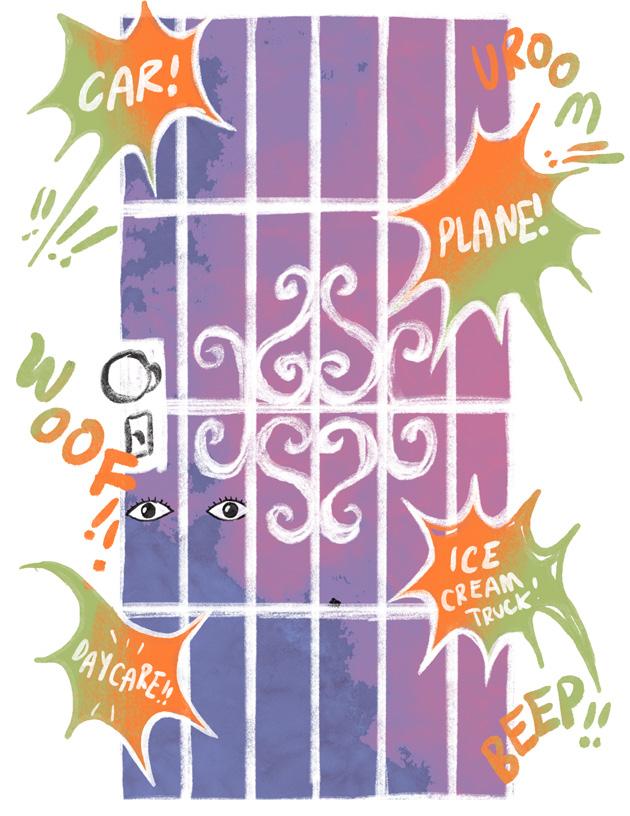
Rio said he slipped out the front door, walked down the house’s front stairs and crossed the street.
In those moments he went missing, Del Rio said she feared the worst.
“I was looking everywhere,” she said. “I was looking in the closet, under the table, in the rooms and restrooms, every inch that his small body can possibly fit.”
“I know it’s not his fault, and it puts more weight on my shoulders because I start thinking about how I couldn’t do anything to prevent it,” she said. “It gets to me every single time.”
According to a 2012 study published in the American Academy of Pediatrics Journal, 49% of children with ASD elope at least once after the age of 4, and of those who attempted to elope, 53% went missing long enough to cause concern. The study included reports of traffic injuries for 65% of the missing children and reports of close calls with drowning for 24% of the missing children.
The first time Lionel went missing he was 3 years old. Del
Del Rio said a stranger found Lionel at Monterey Vista Elementary School, on the other side of the street from her home, and held his hand to prevent him from running off again.
“I was just so happy someone found him and he wasn’t missing,” she said.
To prevent Lionel from eloping, Del Rio made several modifications to her home. Every door in her home has an additional child lock on the door knob, and the doors often remain locked throughout the day. Del Rio also set up a camera in Lionel’s bedroom and makes sure the front door makes a noise when opened.
“Every time someone comes in and out now I am very aware. It’s like I memorize the door sound
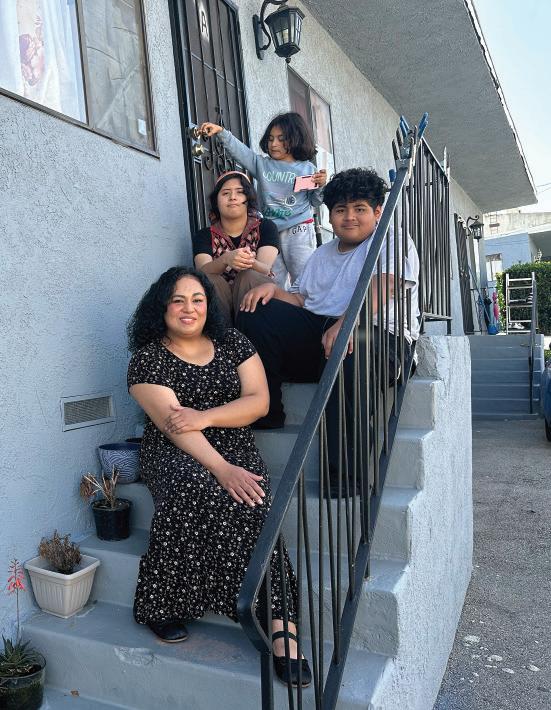 JILL SHIH / NEXTGENRADIO
Araceli Del Rio sits with her three children (clockwise from left), Serenity, 17, Lionel, 7, and Sonny, 13, on the front steps of her Monterey Park childhood home, where they currently all live.
JILL SHIH / NEXTGENRADIO
Araceli Del Rio sits with her three children (clockwise from left), Serenity, 17, Lionel, 7, and Sonny, 13, on the front steps of her Monterey Park childhood home, where they currently all live.

Del Rio holds a photo of her son, Lionel, when he was 3. Taken in February 2020 at Rice Eldridge Elementary School. This was the year he first went missing from his home.
inside my head,” she said. “I have to know who’s in and who’s out.”
Del Rio said despite the challenges of raising an autistic child, Lionel has changed her for the better. She said her experience has taught her how to be an advocate for Lionel and children with disabilities, as well as have more empathy for other caregivers. She wants to raise awareness of the struggles similar children and their families face daily.
“If you’re walking down the street, or in a store, anywhere you go and you see a child running away from their mom screaming,
kicking, moving funny or flapping their hands — don’t just look and stare,” she said. “Wish them well in your heart.”
For Del Rio, home is a safe place. She has memories of watching television with her family, and her mother picked out the floral curtains that still adorn the windows.
She said she wants her children to experience the same tranquility she had.
“When my children come home,” she said, “I want them to smell the home-cooked meals and think ‘this is home, and this is where I can feel safe.’”
JILL SHIH / NEXTGENRADIO


Cigarette smoke lingers in a small living room, lined with family photos, some of them askew. Keepsakes from birthdays, baby showers and graduations are scattered throughout the space, some spilling out from under a coffee table. Trophies and family photos collect dust on a side table by a window in the corner.
“My mom keeps everything,” Anthony Ammons said with a laugh.
In his early childhood, Anthony was a bright-eyed kid with big hoop dreams. The basketball court was where he felt most at home.
However, as Anthony got older, his home life became increasingly unstable. His father was absent for most of his life, choosing the street life over his. Anthony recalls witnessing abuse and carrying the knowledge that his mother was suffering from addiction.
Illustrations by Diana Ramirez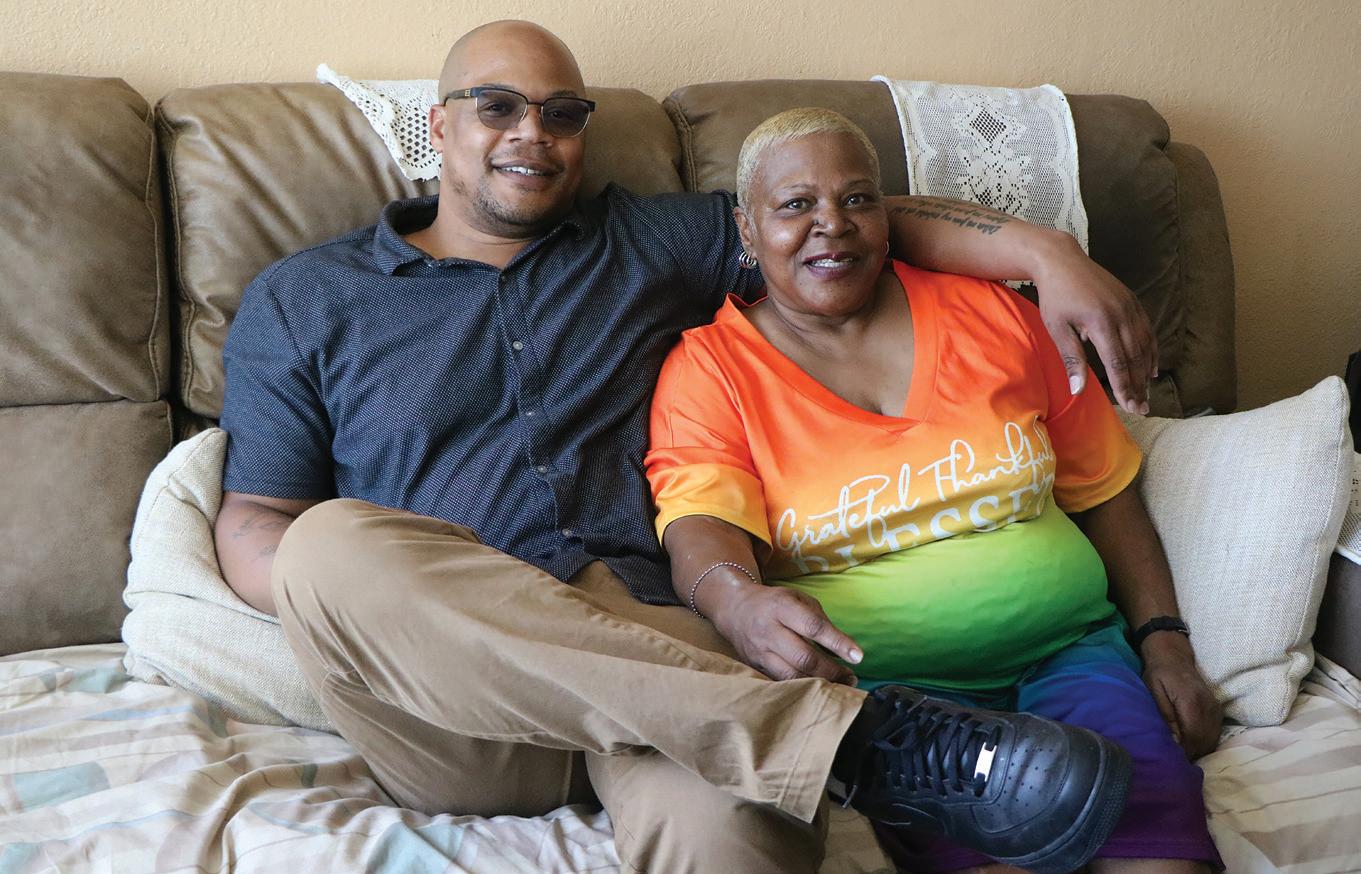
Anthony Ammons Jr. (Left) embraces his mother, Shelly Warren, while on a visit to her home in Compton, Calif., on March 11, 2024. Warren wrote to her son every week of the 20 years he was incarcerated.
As his sense of safety dwindled, Anthony felt unseen and unheard, longing for a sense of comfort.
“I started to not care,” Anthony said. “I was suffering from an issue of loneliness … violence, in a sense, filled the void of my loneliness.”
Anthony seemingly found acceptance and understanding when he joined a gang. With each crime he committed, he found acceptance from his peers.
Things came to a head in March 2001. Anthony recalled cruising around with two friends. They pulled up to a car at a red
light and began to heckle the occupants.
Citing a desire to impress his friends, that was when he fired several shots, striking two of the car’s passengers — killing one of them.
Following the shooting, Anthony was given a sentence of 102 years to life, the severity of which did not sink in until he spent his first night in prison and felt the sting of loneliness.
Anthony eventually found himself at San Quentin State Prison, following dismissal from a maximum security prison. He soon joined the prison’s
LOLITA
basketball team, sponsored by the Golden State Warriors.
“It was just so fun to play with guys, especially at a level that I knew how to play at … a level that requires accountability,” Anthony said.
Being part of the team gave Anthony a reason to follow protocol and focus on his personal development.
Shelly wrote him letters every week for the 20 years that he was incarcerated.
With each letter, their relationship evolved and she
began to change. In one letter, dated September 2003, Anthony’s mom spoke hopefully.
She told her son about her new job and a new home and celebrated her sobriety and her faith in God. Anthony beamed with pride when reading her letter aloud.
“Getting these letters from my mom … I felt like a son,” Anthony said. “I felt seen. I felt heard. Even though it was a separation, I felt wanted, loved.”
After leaving prison, Anthony was introduced to California
Assemblymember Mia Bonta (D-Oakland). Bonta’s husband, California Attorney General Rob Bonta, hired him soon after.
Under Bonta, Anthony said he drew from his experiences to develop solutions for the community and life after prison.
Today, he says his purpose is to bring awareness to the struggles formerly incarcerated people face upon their
reentry into society.
Anthony said there are many things that formerly incarcerated people cannot do, which may surprise people.
“In the state of California, there are certain things that you can’t do having a record. Getting pulled over sucks because immediately, when you’re on parole, you get your car searched automatically,” Anthony said. “We can’t adopt if we don’t want to have kids naturally, we can’t adopt as formerly incarcerated people, which sucks.”
While working in Oakland, fate intervened once more.
“Unfortunately, after my release from prison in Oakland, I was shot. I was shot in the right hip. The bullet
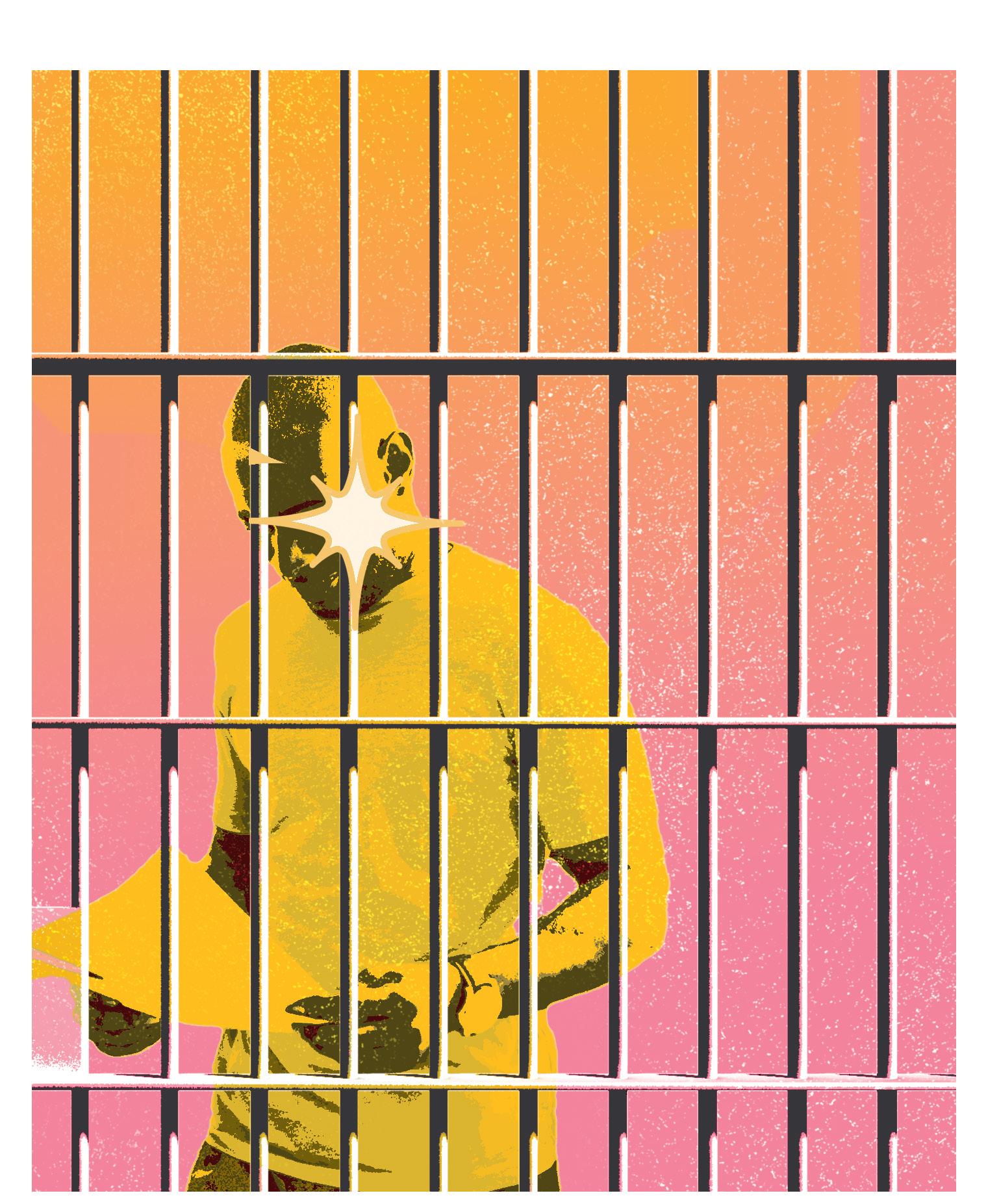


LEFT:
Ammons looks through one of the many photo albums at his mother’s house. He lingers on a photo of himself, at about age 8. “That’s me throwing up gang signs early,” he laughs. RIGHT: Anthony Ammons reads one of the letters his mom wrote to him in prison. One of her letters, dated September 2003, starts with, “Dear Anthony, How’s mommies [sic] baby doing?”
hit my sciatic nerve and kind of destroyed my foot,” Anthony said.
This injury led to yet another drastic shift in Anthony’s life. He can no longer play basketball and has moved back to Southern California to be closer to his mom.
“I wanted to be closer to home because I’m a mama’s boy,” Anthony said. “I had to be close to my mom because I felt death.”
Back at his mother’s home in Compton, Shelly keeps the memories of Anthony’s past life in a box, tucked away in the den. Its contents spill over; dozens of letters from mother to son,
photos of a young Anthony in a prison uniform, and a letter of commutation.
“Put that box up when you’re finished,” Shelly calls to her son, as he rifles through his memories.
The pair have been through hell and back. On the other side of 20-plus years of strife, they sit on the couch, surrounded by old family photos. They joke and laugh with each other, bickering in jest. As they cuddle up to one another to have their photo taken, she gives her son a quick glance before the camera clicks. Her boy is home.
LOLITA MOJICA / NEXTGENRADIO Anthony







 Illustration by Arantza Peña Popo
Illustration by Arantza Peña Popo
 Illustration by Arantza Peña Popo
Illustration by Arantza Peña Popo


